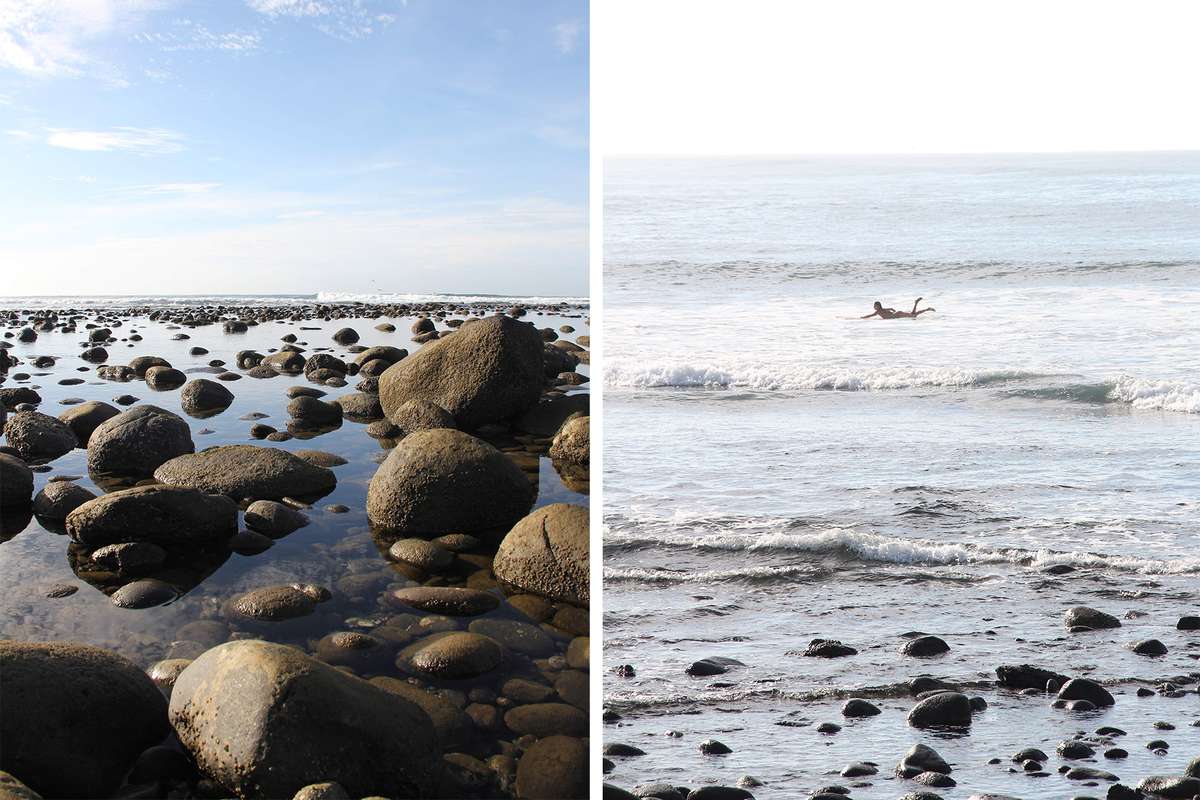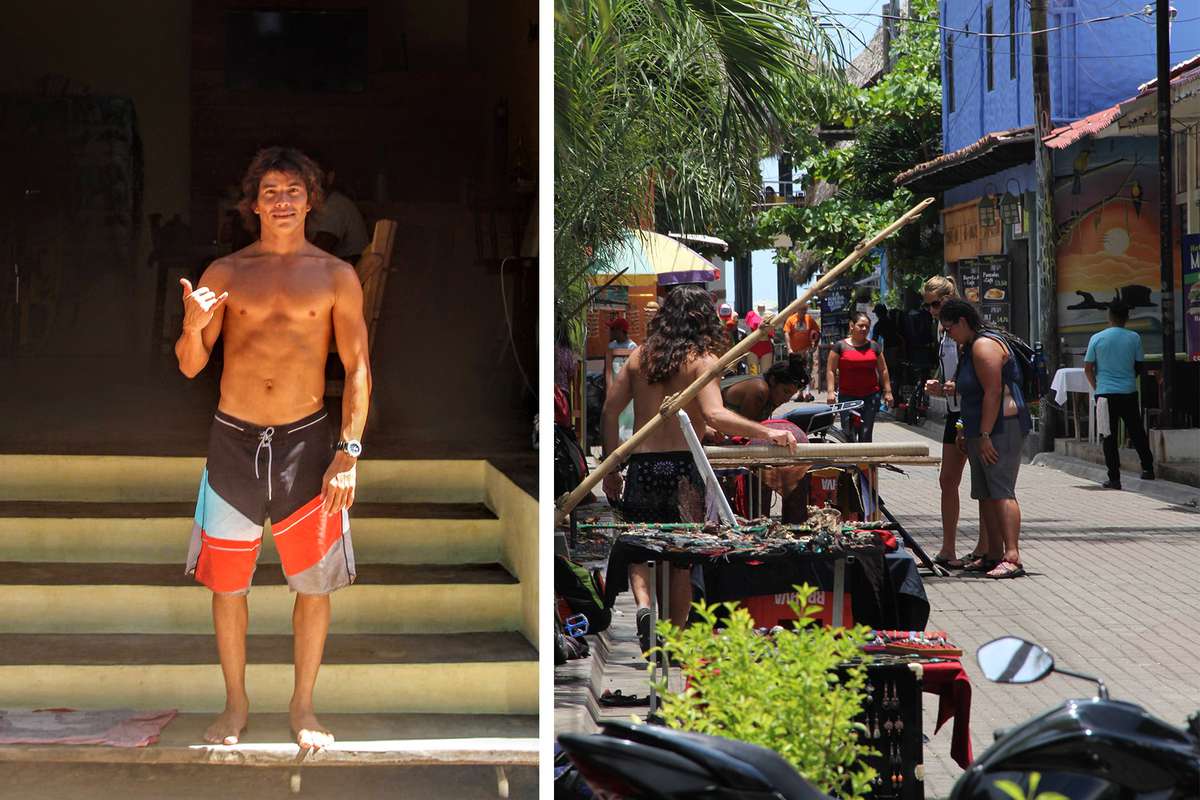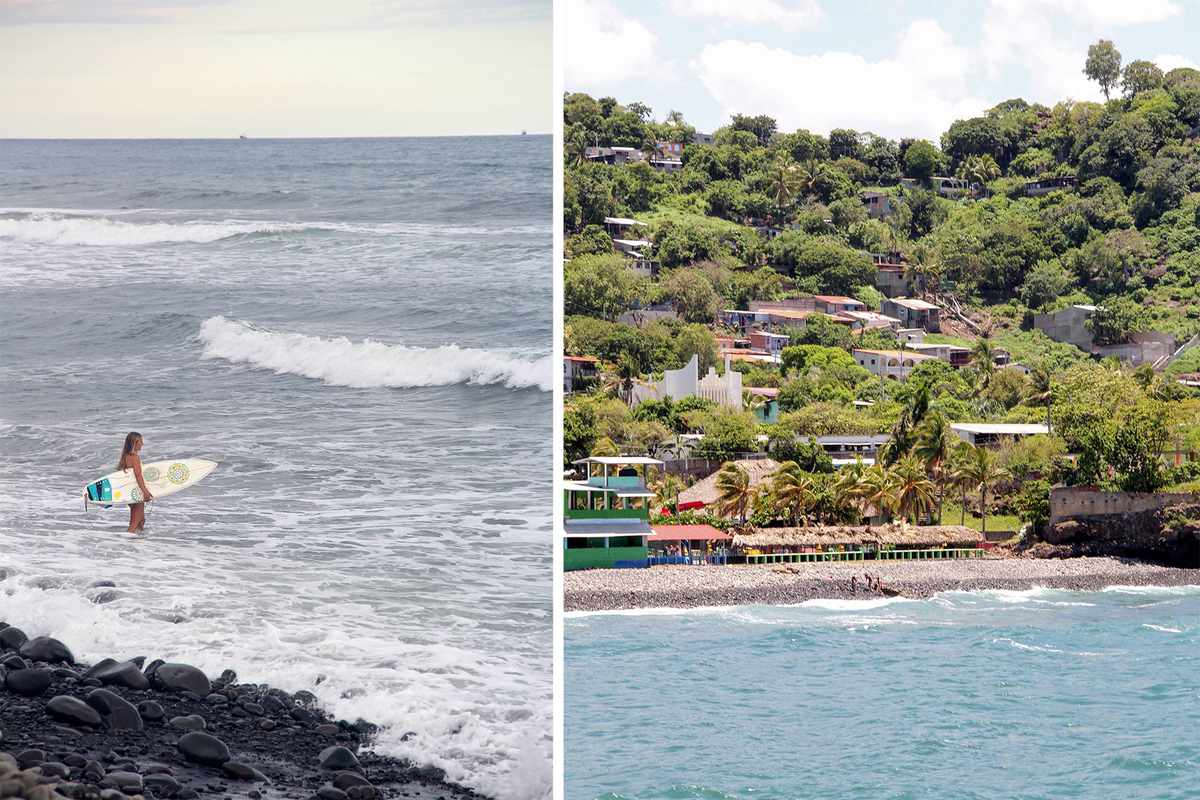
A world away from the congested streets and city noises of San Salvador, you'll find the beaches of La Libertad, dotted with surfers taking a break from their day-to-day lives to catch a wave or two. Though it's just a 45-minute drive south of El Salvador's capital city, you'd be hard-pressed to find many similarities between the two areas.
In La Libertad, the beat of the day slows down to a glacial pace. Located on the country's southern shore, the department of La Libertad extends from the outskirts of San Salvador and down to the Pacific Ocean. The beaches that line the 25 or so miles of shoreline have been attracting surfers for generations, but mainly those from Central America. In recent years, surfers the world over have been coming to the region to experience its legendary surfing. It's a welcome change, as El Salvador has struggled in preceding decades to attract anyone beyond its borders — but things are changing for this tiny country and the world is taking note.
"You'll find some of the best surfing in the world here in El Salvador," said Porfirio Miranda, a professional surfer who grew up in La Libertad. "We have warm water, several different point breaks along the coast, and everything is right here."
But the country's reputation for violence kept most tourists from visiting El Salvador. They instead visited surrounding countries like Costa Rica, Guatemala, and Panama, where surfing is equally regarded as some of the best in the Western Hemisphere and conditions have been statistically safer.
"Because of the negative publicity we get around violence, people have been reluctant to come," Miranda explained. "But that's changing."
El Salvador, roughly the geographic size of New Jersey with a population smaller than that of New York City, has historically never been considered much of a tourist destination. Gang violence and poverty are common themes in international media coverage, with little else making headlines. The Civil War that crippled the nation from 1979 to 1992 had a long-lasting impact, much of which is still felt today. But over the past decade, poverty levels have steadily decreased, according to the World Bank. Crime has also drastically declined, due in part to the government's efforts to reduce gang violence. Once declared the most dangerous country in the world outside of a war zone, El Salvador hit an all-time low in homicides in 2020, dropping 62.5 percent from the previous year.
At the same time, tourism has gradually increased, peaking in 2019 with over 2.6 million tourists coming to the country. And surfing is the main reason they're coming.
"We're different from other surfing areas like Guatemala and Costa Rica because the beaches are really concentrated here," Miranda said. "And in Peru, you have to wear a wetsuit in the water because it's so cold, but here the water is always really warm."
Miranda refers to the close proximity of the beaches, making it easy for surfers to bounce from one to another. Within less than a 20-minute drive you'll find El Zonte, El Tunco, La Punta break, El Sunzal, and El Majahual, among others. With local tourism so focused on the water, it's no surprise that some of the world's best surfers come from the area.
Bryan Pérez, 21, is widely regarded as the country's top surfer. He started to compete professionally at the age of 14 and has since traveled all over the world to take part in competitions. He's also planning to compete in the upcoming Olympics, the first time surfing will be a part of the games, to represent El Salvador. And while he has his favorite beaches across the globe, he still believes the surf in La Libertad is unparalleled.
"I want to put El Salvador on the map because it has great surfing, great beaches," said Pérez. "The point breaks here aren't like anything else you'll find."
With miles of beaches that are topographically formed to create a regular current of surfable waves and with little other economic generators in the area, aside from sugarcane fields, it's no surprise why the hospitality industry has taken root. But it's only been in recent years that the region's success has kicked off.
The small towns surrounding the beaches in La Libertad have seen significant investment in recent years, mostly in relation to its surf scene. A number of mid-range to luxury hotels have popped up right by the water, including Casa De Mar and Palo Verde Hotel, a boutique property in El Zonte that focuses on sustainability. A new highway was constructed that connects San Salvador to the coast, making it easier for visitors to get from the airport to the beaches quickly.
In 2017, Puro Surf, a hotel and performance academy that works with novice up to professional surfers on their technique, opened its doors at El Zonte. The sprawling complex overlooks the beaches where at any given time you'll see a small gathering of surfers bobbing in the water waiting to catch their next wave, including Pérez. His manager, Marcelo Castellanos, also happens to be the owner of the academy.
When I landed in El Salvador to write this story, it wasn't my first time in the country. I had visited in 2009 and spent a summer traveling around San Salvador and the surrounding towns, but never made my way to the coast. When I heard of the growing tourism industry centered around surf, I knew I wanted to go back. So, roughly 10 years later, I headed down to learn more about the surfing community and the towns on the southern shore.
Before I arrived, I had set up interviews with a number of people in the surfing community, including a handful of professionals who grew up in the area. That included Katherine Diaz, a then-19-year-old professional surfer who was largely regarded as the best female surfer in the country — and was unapologetically proud of her hometown.
"I grew up here and I learned to surf here," said Diaz. "It's a really special place that more people should know about. We have so many great beaches and it's not as crowded as other surfing areas. It's just really unique."
Diaz was a huge supporter of the local surf scene, regularly touring the world and advocating for El Salvador. She competed in competitions against some of the best surfers in the business and was considered a fixture in the community. She had aspirations of competing in the upcoming Tokyo Olympics.
This past March, while training for the ISA World Surfing Games, a qualifier for the Tokyo Olympics, Diaz was struck by lighting in the waters of El Zonte beach. She passed away at the age of 22.
Friends and fellow surfers, inspired by Diaz's commitment to the area, continue to carry the torch and celebrate La Libertad's uniqueness. Due to the investment in the area and with violence trending downwards, La Libertad is set to really grab international attention in the surfing community.
"I think that everyone should come to El Salvador," Diaz said. "Not just for the surfing, but because the people are so friendly. But I still think El Salvador has the best surfing in the world."
Source: Read Full Article

















